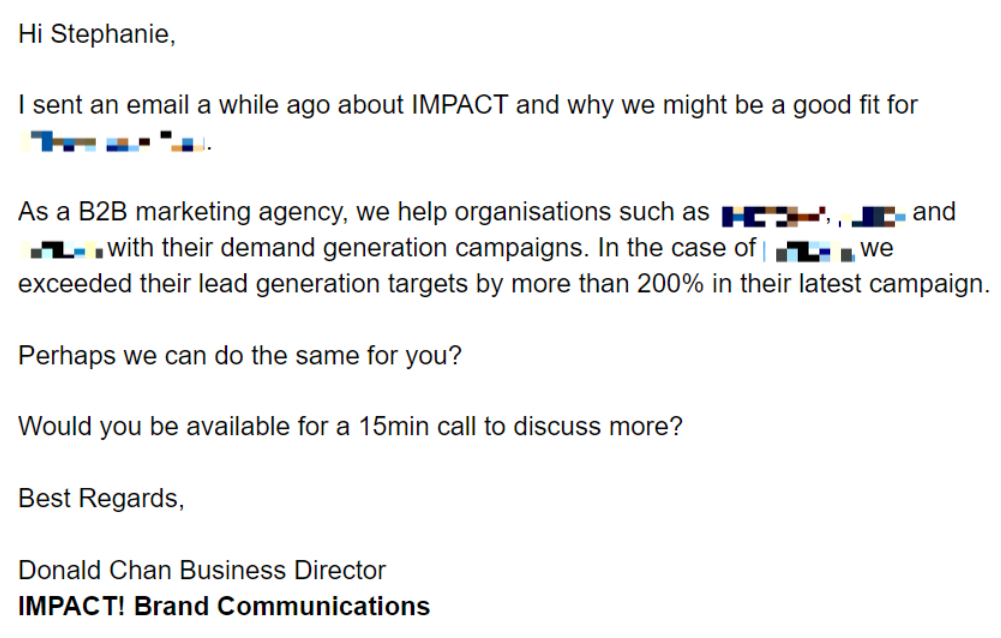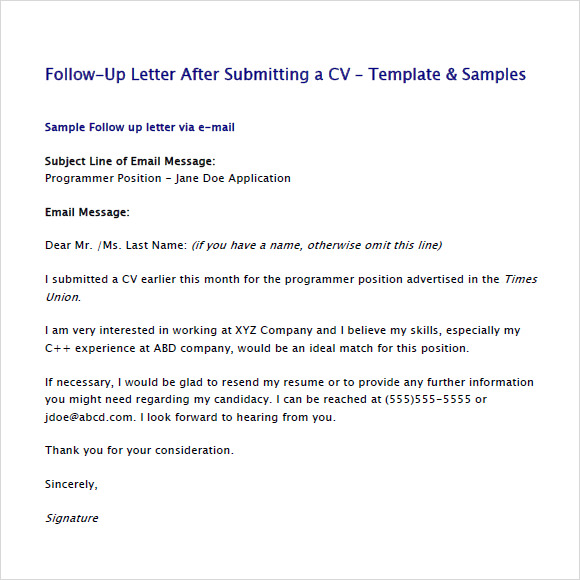

This gives the recipient time to consider your offer without feeling like you’re rushing them. The first follow-up email should be sent about a week after the initial contact. I’d suggest sending one or two follow-up emails.
#Follow up email professional#
You want to make sure you’re coming across as professional and not desperate.

If you’re sending a follow-up email, it’s important to be persistent but not to the point of being annoying.Īccording to the study by Woodpecker that we referenced earlier, 2-3 follow-ups is the most optimal number to send. Remember, when it comes to follow up emails, the key is to be polite and persistent! How Many Times Should You Follow Up? If you don’t hear back from the recipient after a week, it’s reasonable to send one final follow up message. It’s important to remain polite and professional in your follow up email, and never come off as pushy.Īt the same time, you don’t want to wait too long to follow up, as this can make it seem like you don’t care about their response. Mention that you sent a previous message and that you were hoping to hear back about the issue.

If you don’t hear back from the recipient after three business days, it’s perfectly acceptable to reach out with a gentle reminder. This gives the recipient adequate time to review and respond to your initial message. Generally speaking, you should wait at least three business days after sending your initial email before you follow up. It’s important to consider both the recipient and the context when deciding when to send an email follow up. When it comes to follow up emails, timing is key. Or, you have been building backlinks with a few partners but one of them simply forgot to get back to you. Or maybe you’re in the middle of a business negotiation and you’ve been waiting to hear back from the other party.Ī follow-up email can be a great way to break the stalemate and help move the conversation forward. Image source: Woodpeckerįor example, let’s say you sent an email to a potential employer asking for an interview.Ī good idea would be to send a follow-up email a few days later to make sure the hiring manager received your message and to remind them of why you’d be a great addition to their team. That’s huge for all types of cold outreach – from email marketing to sales email outreach, getting a hold of people after a networking event, or even customer service. In fact, according to a study by Woodpecker, a single follow-up can bring your reply rate from 9% to 14%. Plus, they can help foster a positive relationship and ensure your requests don’t fall through the cracks. Why Should You Follow Up?įollow-ups are the extra little something to make sure your message gets through and that the recipient understands the importance of what you’re saying. In other words, it’s your way of making sure your message didn’t get lost in the digital abyss.įollow-up emails get a bad rep for being misused by junior outreach personnel and inexperienced sales rep teams, but when done well, they can dramatically increase your open and response rate, regardless of the type of email campaign you’re running. It’s like a friendly reminder that lets the recipient know that you’re still interested in hearing back. It’s the polite way of saying “Hey, I’m still here and I’m wondering if you had a chance to look at my message yet.”
#Follow up email for free#
Gain access to the 3-step strategy we use to earn over 86 high-quality backlinks each month.ĭownload for free What is a Follow Up Email?Ī follow-up email is the digital version of knocking on a door and asking “are you there?”.


 0 kommentar(er)
0 kommentar(er)
